Georgia on our mind
Indeed, Georgia has been on our mind lately. We crossed the border into Georgia after a great week in Armenia and headed up to the country’s bopping capital, Tbilisi. Originally we were going turn east from here and head for Azerbaijan but since that plan has been shot through the heart we are now intent on spending some quality time here and exploring this fascinating crossroads country.
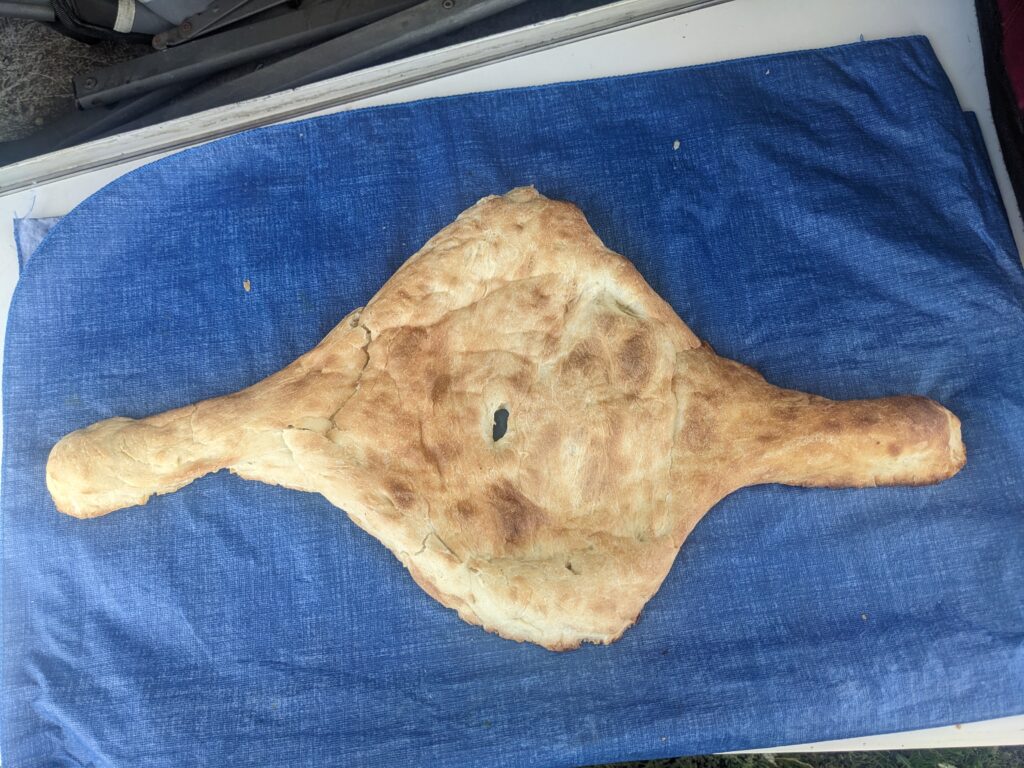
Like the other Caucasus countries of Armenia and Azerbaijan, Georgia has had a long, complex and tumultuous history. All three countries were republics under the umbrella of the USSR until that all broke up in 1991 and they became independent nations. In the case of Georgia they share a long border with modern day Russia and have many serious conflicts with their big brother neighbour, including having two regions, Abkhazia and South Ossetia, effectively controlled and administered by Russia against western and UN recognition. But that’s the sort of region this is, full of historical and political conflict, cultural clashes and long-simmering disputes.
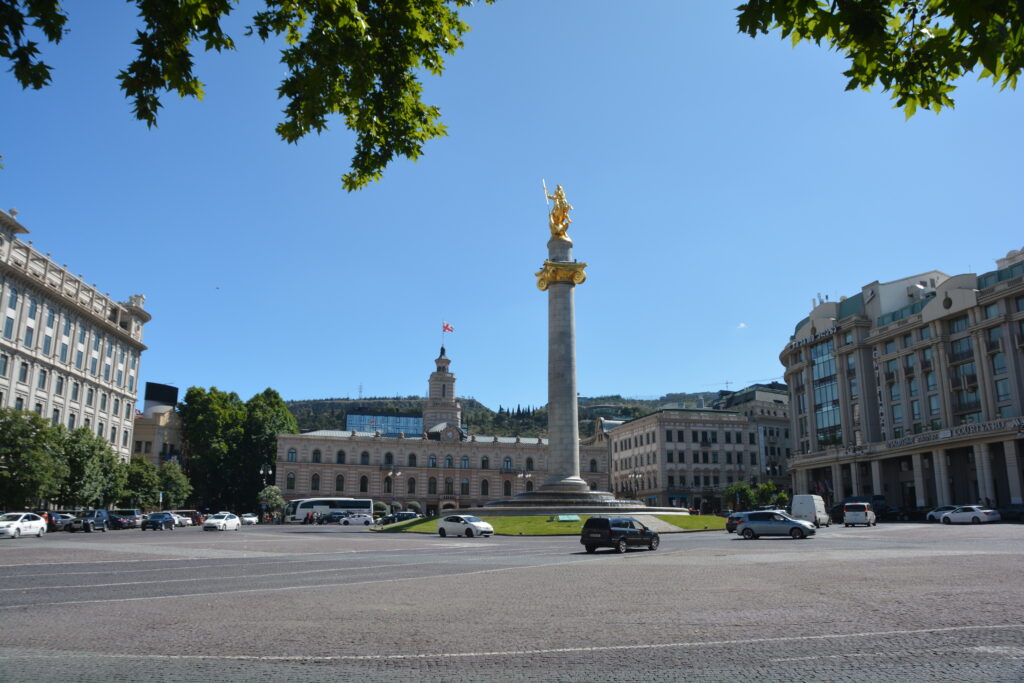
We immediately got a good vibe from Tbilisi. A large city more than a million strong, straddling the greenish Kura River (the western name for the river because the other name is unpronounceable), beautiful tree-lined streets, modern (some of it weird) architecture mixed in with an old town dating back 200 years, an 8th century fortress guarding the city from above and a nifty cable car taking visitors up to the top. It had a hint of Budapest about it and definitely a lot of character.
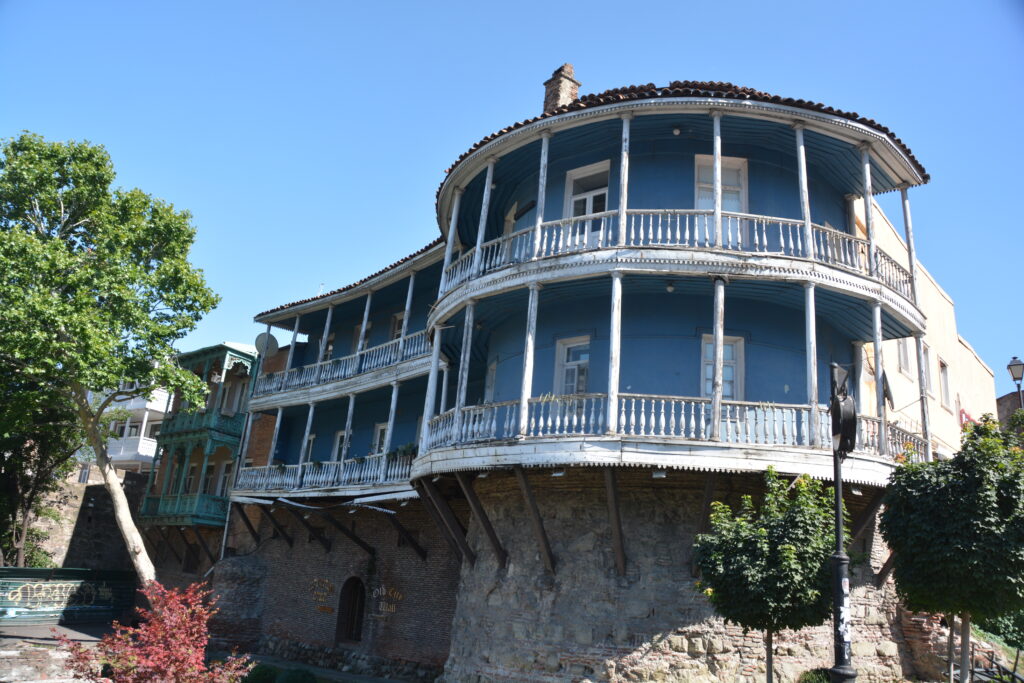
We walked the labrynth of alleyways of narrow streets of the old town and remarked at how authentic it all was – some buildings were propped up to keep them from falling over, others had seen no love for more than a century. And yet people lived here, there were small art galleries, a few cafes and a strong life-as-normal sense of it all.
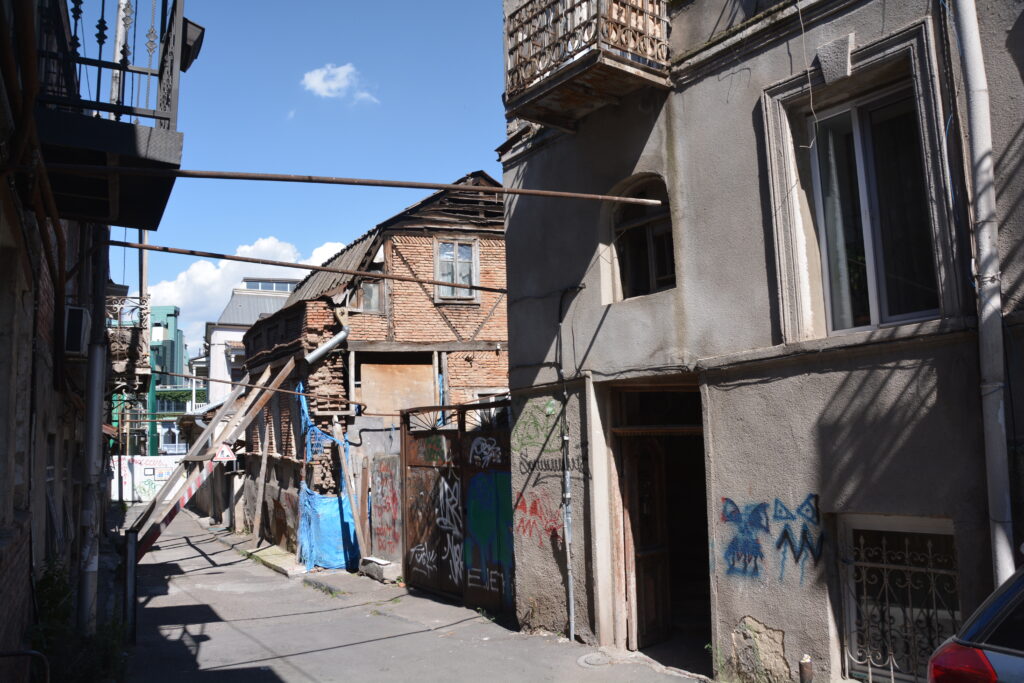
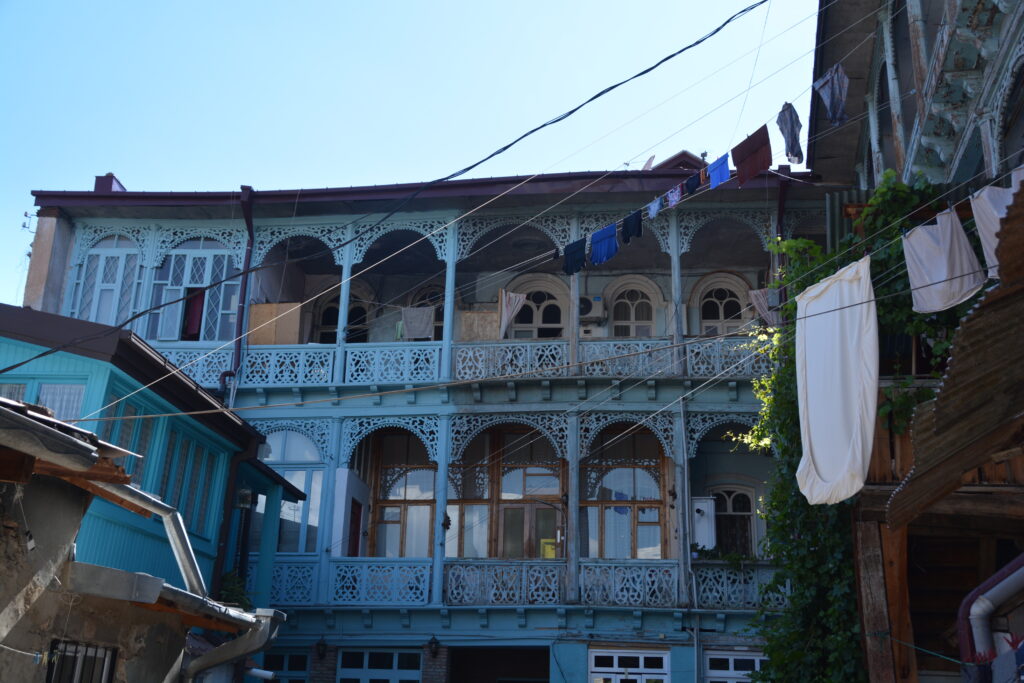
We also did a half hour river cruise up and down this section of the river, a very low key casual Georgian experience, before driving out to the Tbilisi Reservoir where we camped the night overlooking this handsome lake and watching all the locals use this great recreation asset.
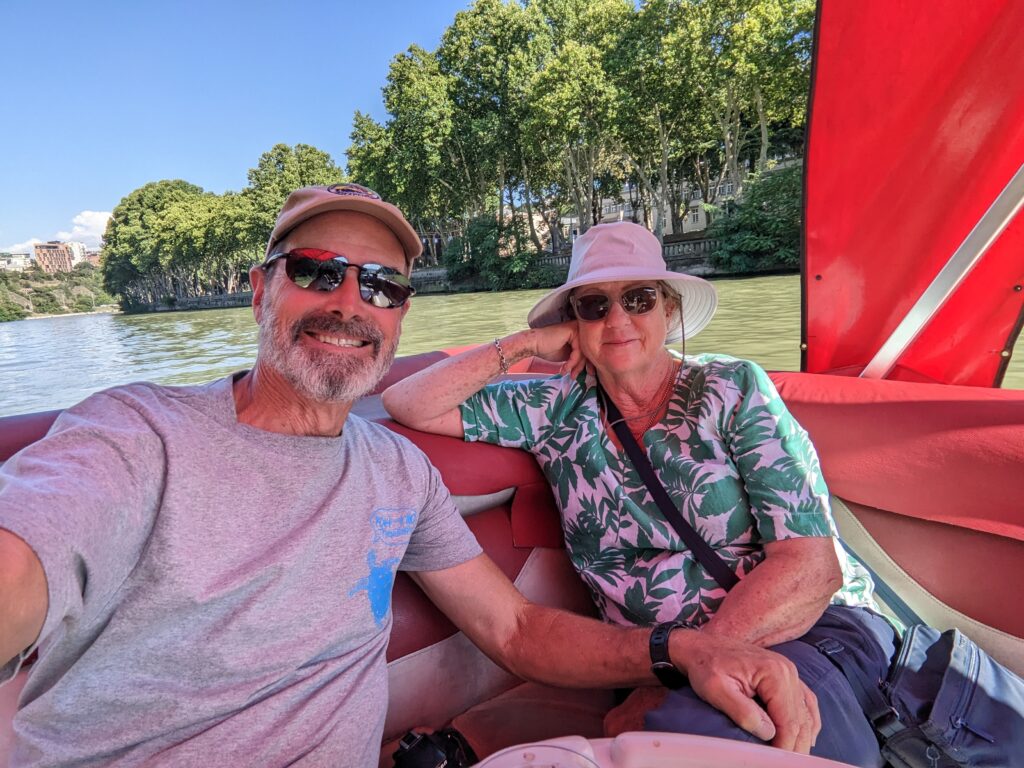
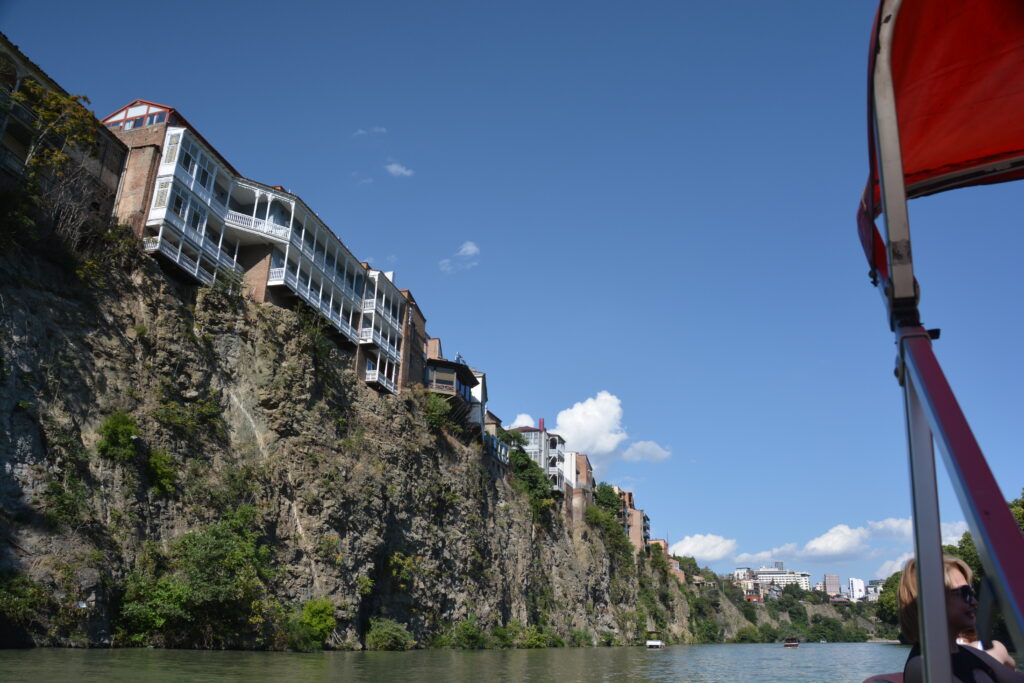
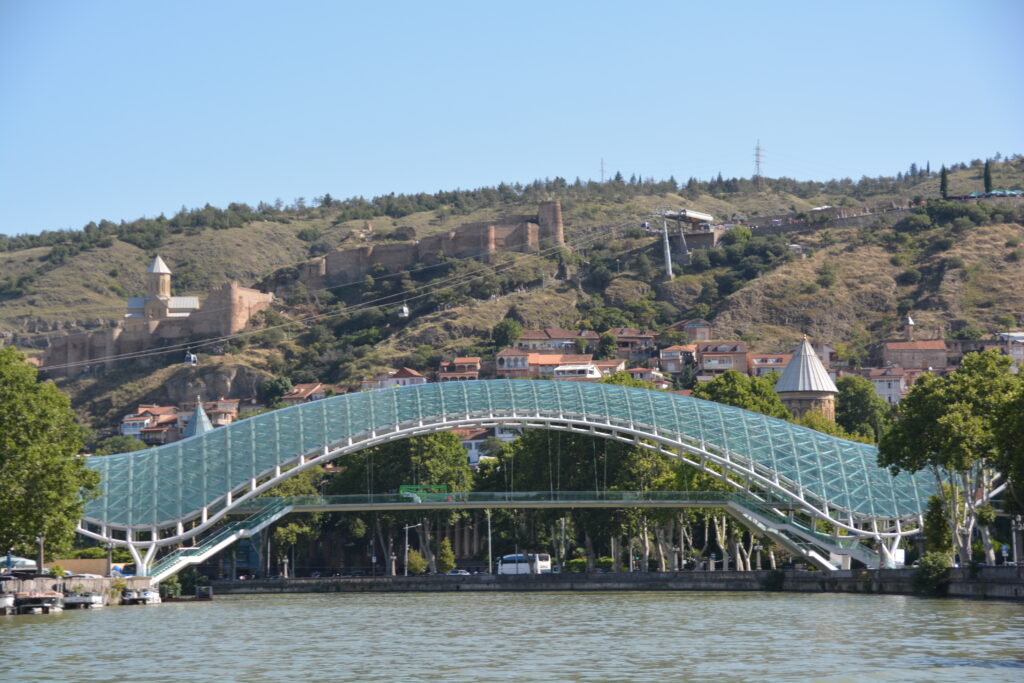
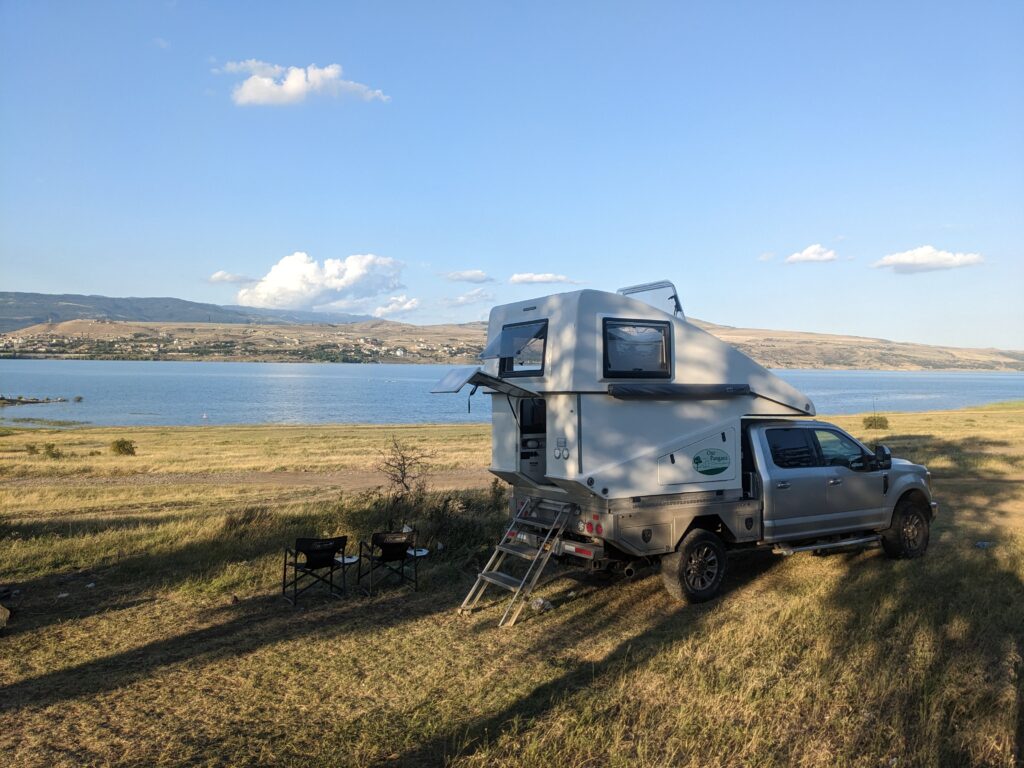
The next morning we visited the enormous Chronicle of Georgia statue-monolith structure overlooking the lake. We figured out this is where Georgia has written their history their way in a monument that is intended to last thousands of years. Given it’s size it just might.
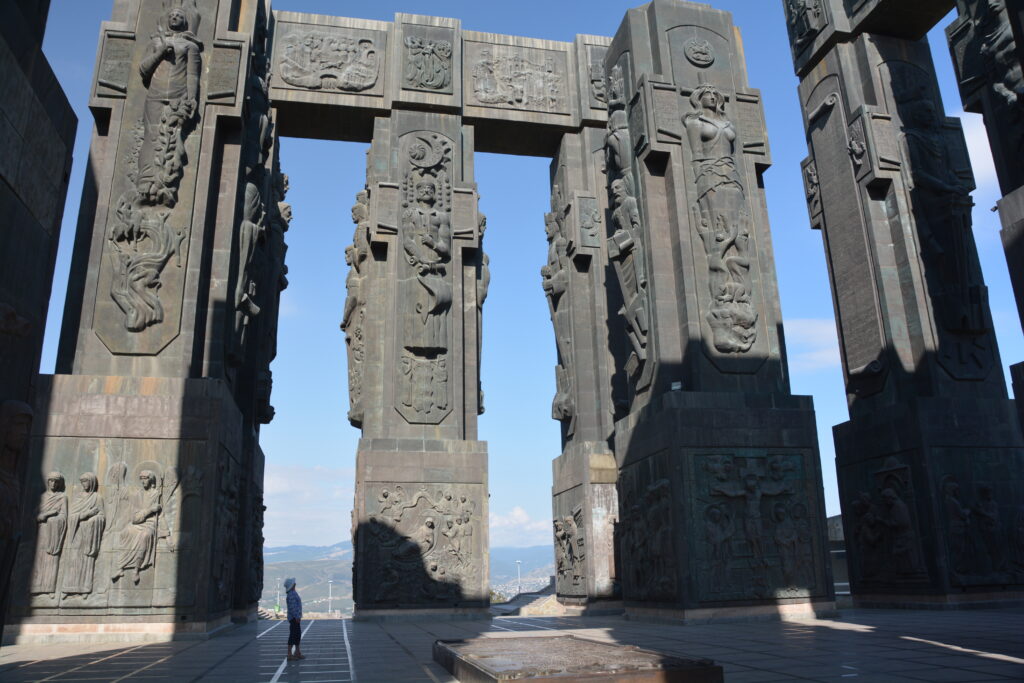
We were then back in town and rode the cable car up to the crumbling fortress, which we climbed around while taking in the great views of the city, and explored more of the city before heading out of town towards the David Gareja Monastery 90 minutes out of town.
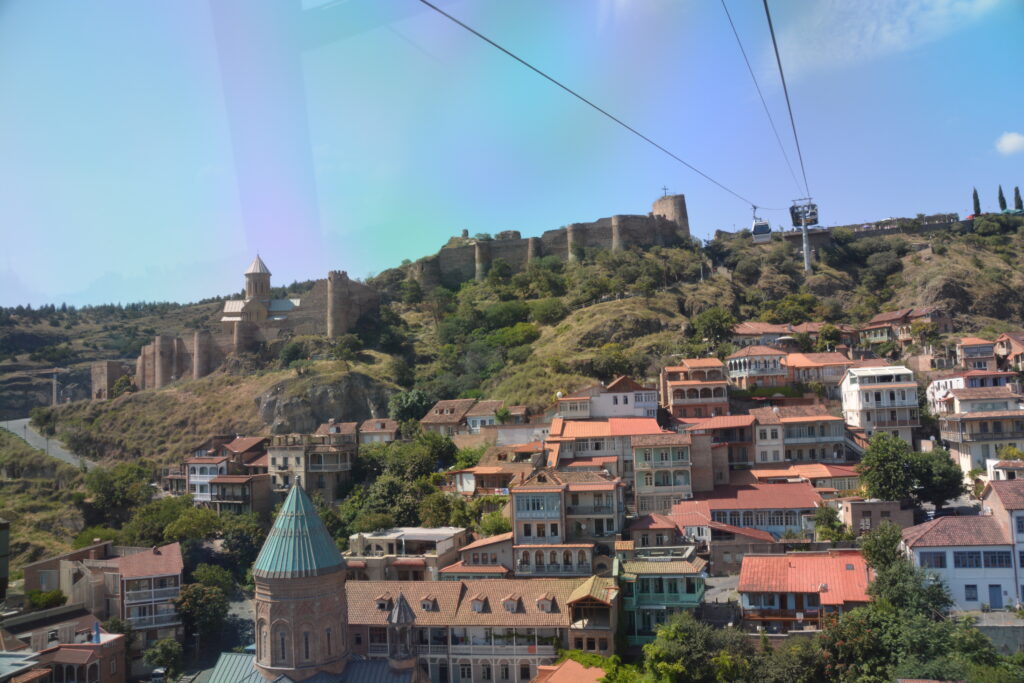
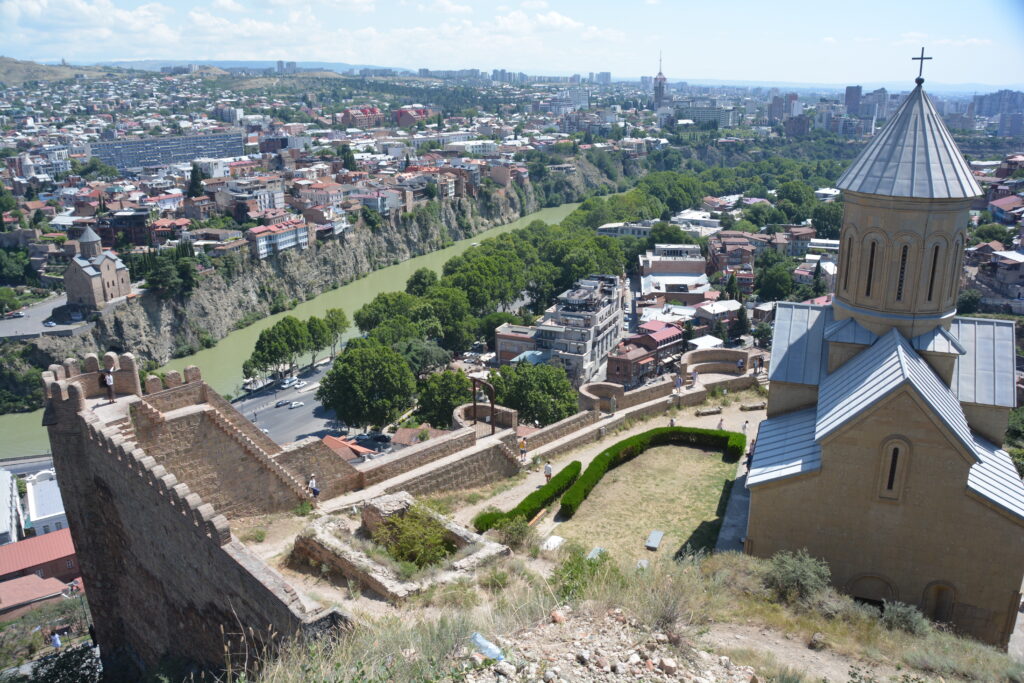
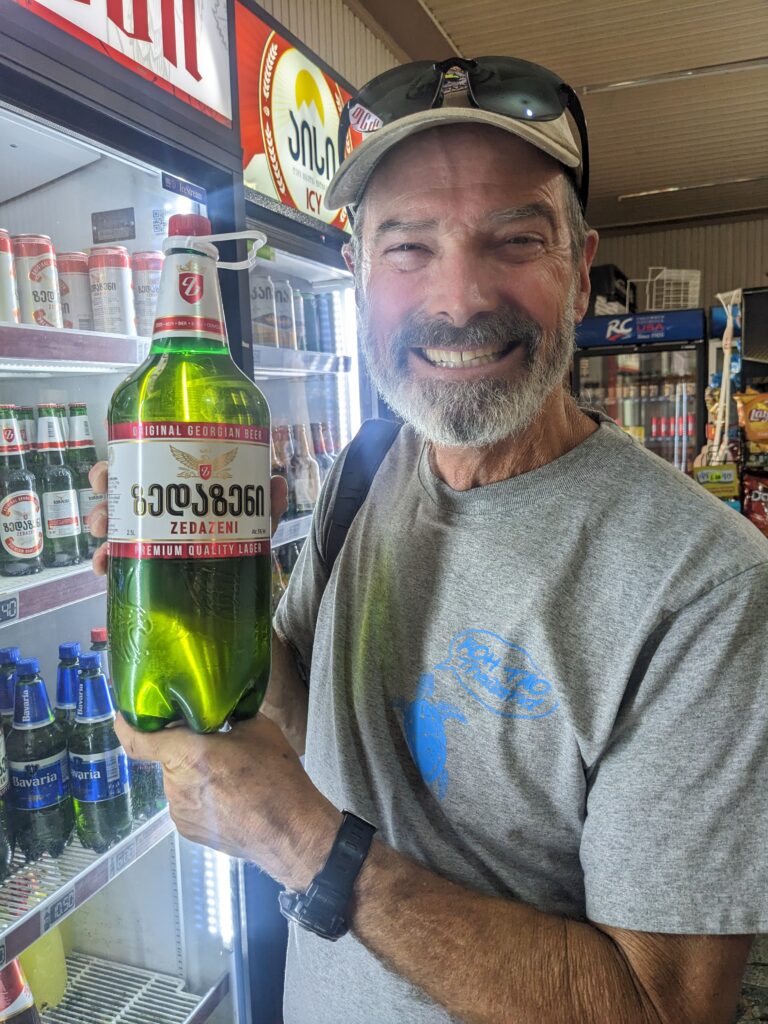
The monastery was first established in the 6th century, carved out of a stone mountain that is now on the Azerbaijan border. To get there we crossed vast dry open plains stretching as far as we could see, no farming or grazing or life visible at all. Through the semi-deserted community of Udabno, a place reminding us of Day of the Triffids with it’s hollowed out old buildings and lifeless streets, we followed a winding road which actually crossed over into Azerbaijan briefly and then ended at this uber-remote monastery.
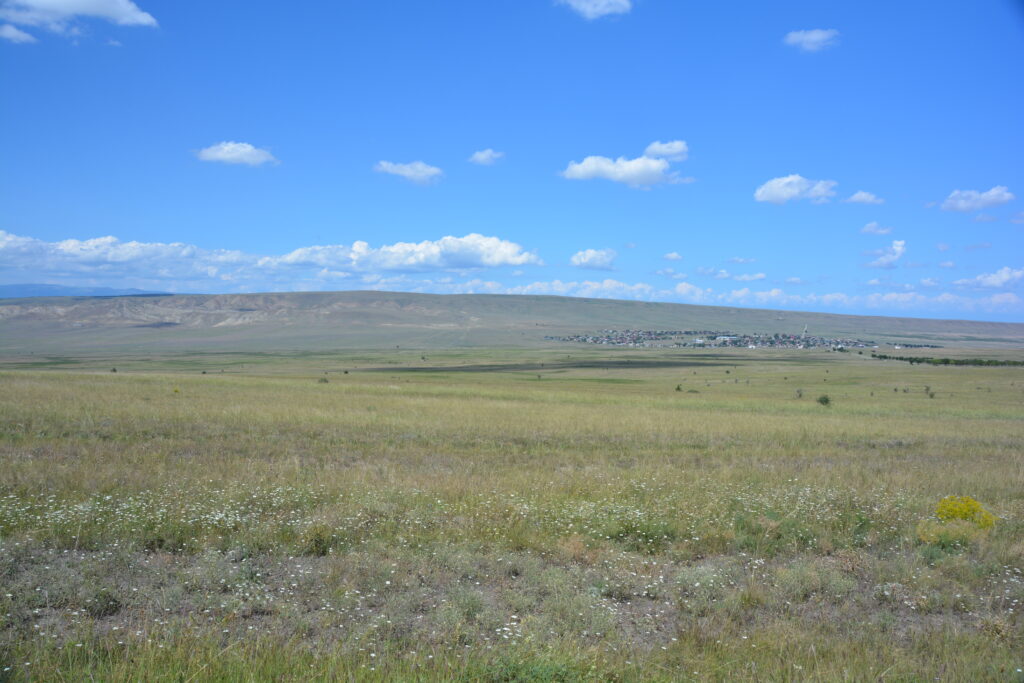
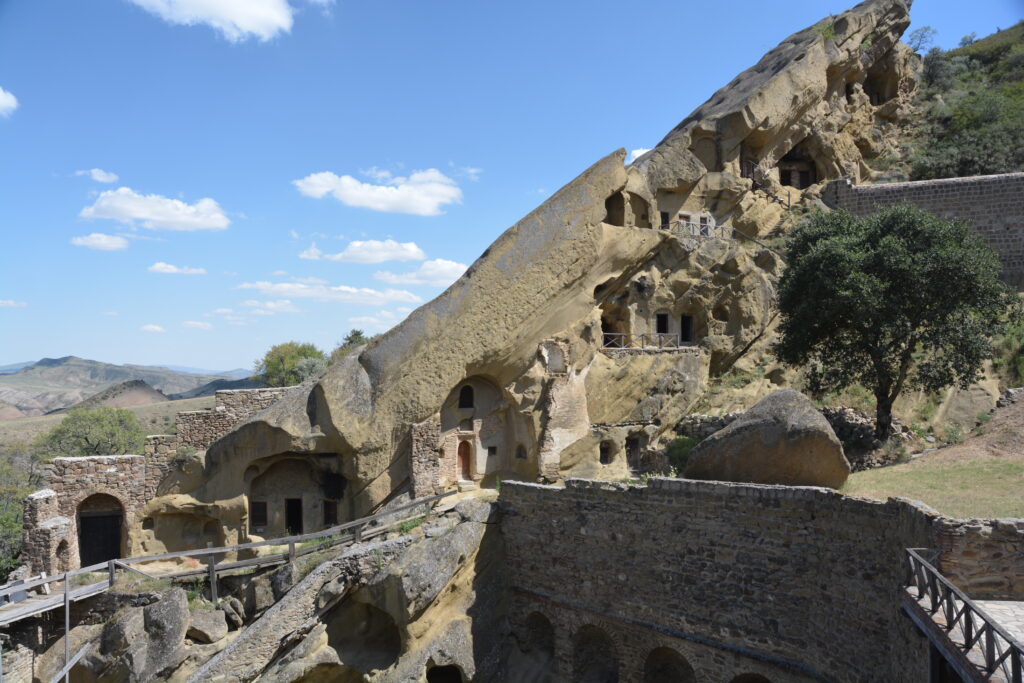
In the melting heat we climbed amongst the ruins as best we were allowed, which wasn’t too much to be honest, and marvelled how the history of this obscure site over the years mirrored the history of this country – built up, destroyed, built up, massacred, built up, vandalised, built up again.
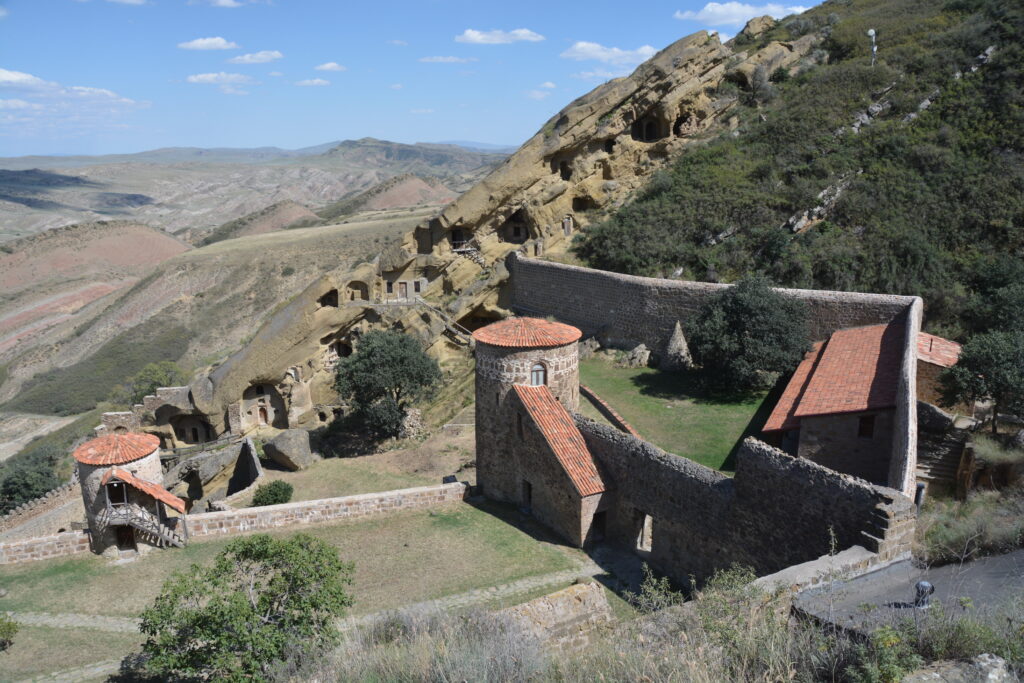
To highlight the point, with the Azerbaijan border only a throw away we were watched by Georgian military border guards, machine guns strapped over their shoulder. They stood guard above the monastery and were happy to wave us a hello as we carefully walked past them.
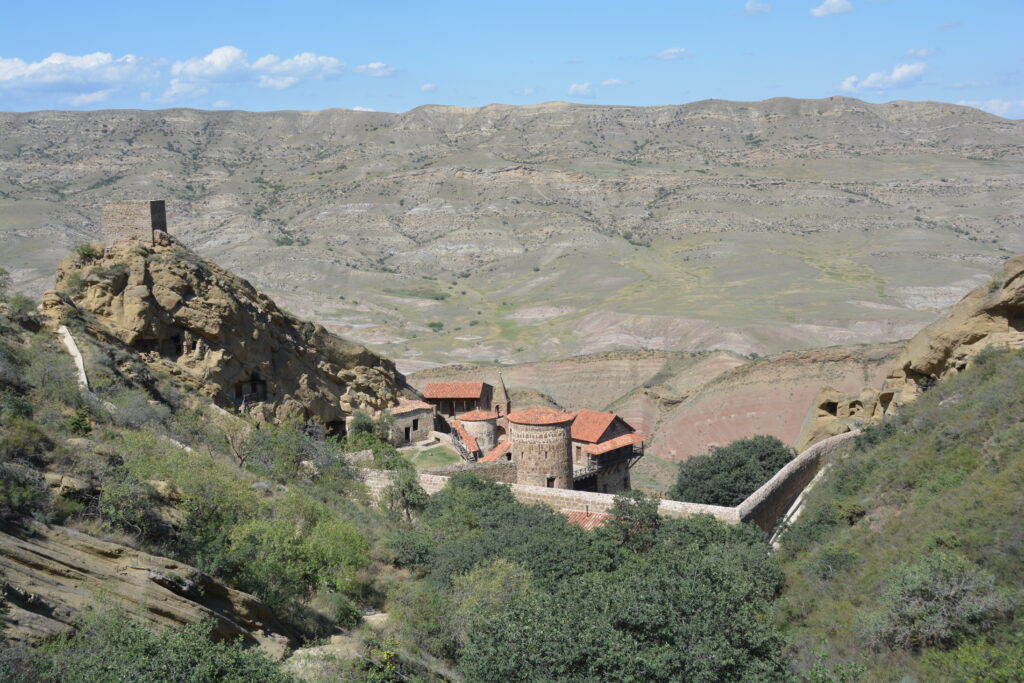
We returned to Udabno and camped in the backyard of practically the only life in town at the Oasis Club, a very cool and casual hostel, enjoying a Georgian dinner in their restaurant and a couple of cold Georgian draft beers.
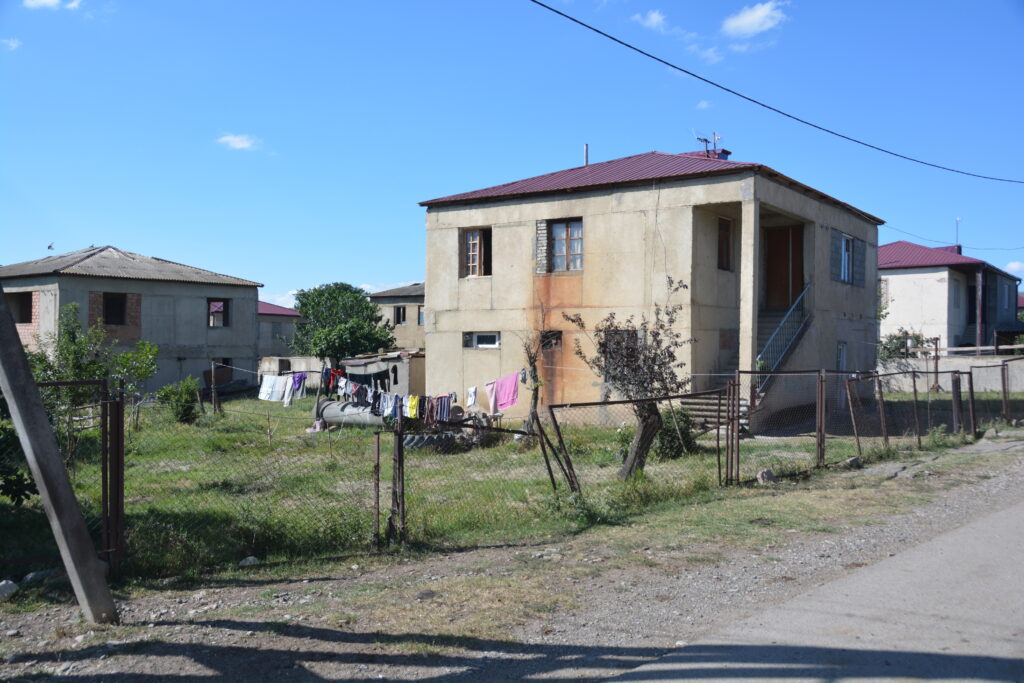
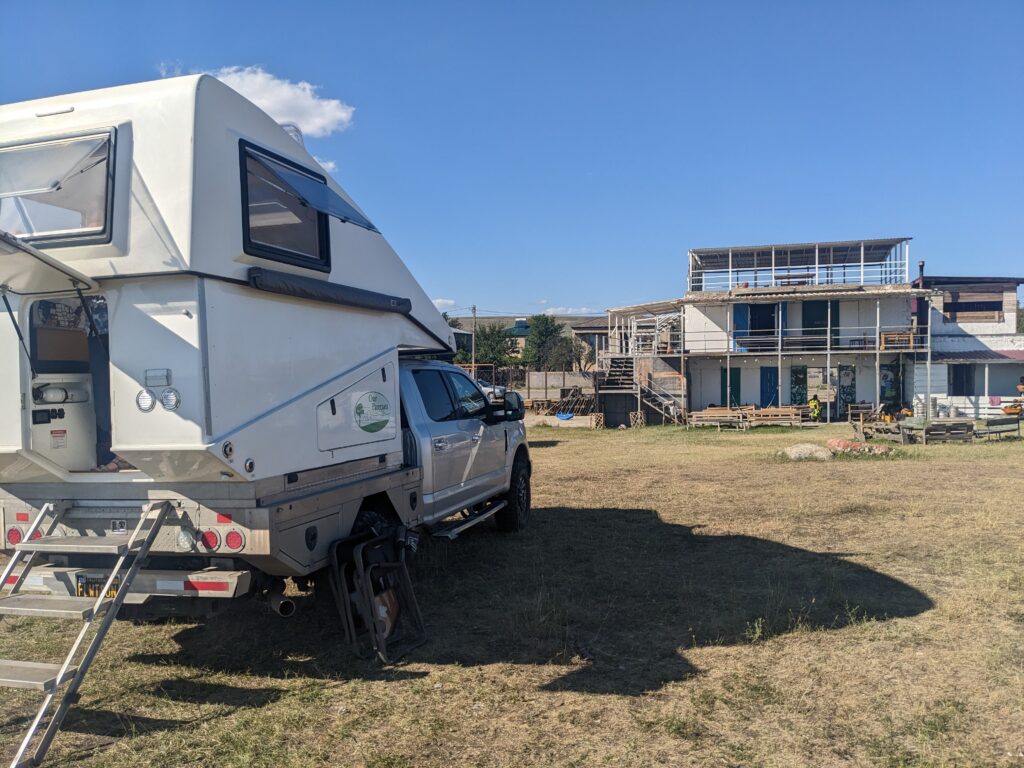
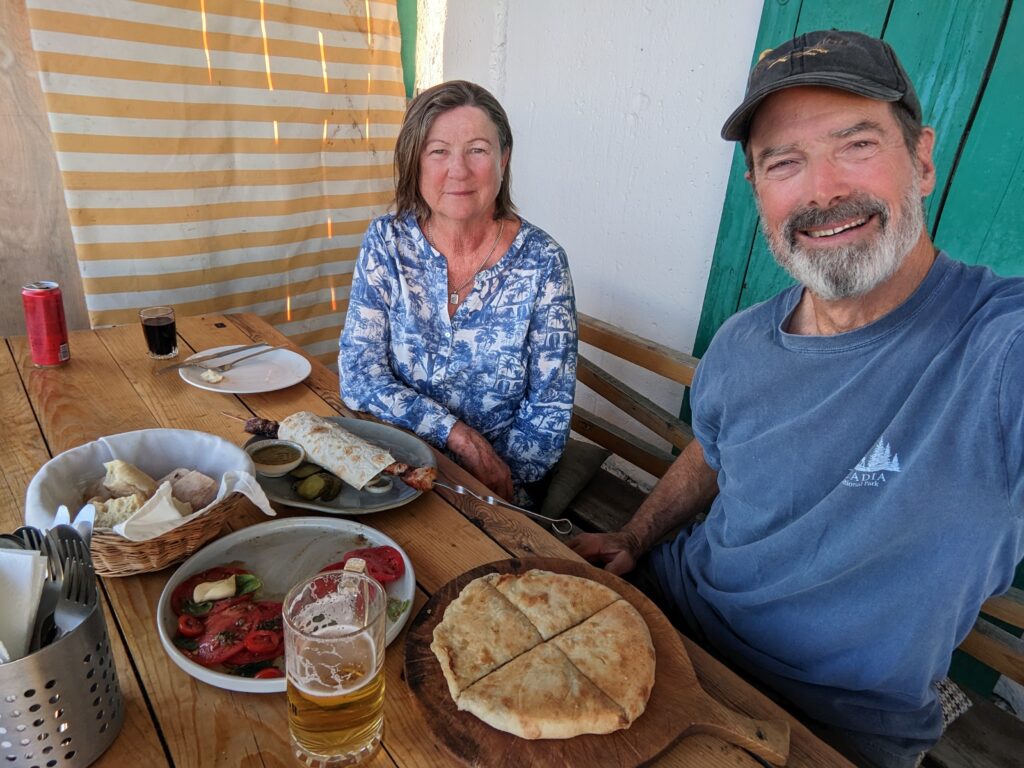
Like Armenia, Georgia is not a high-octane tourist destination. Landlocked and lacking even moderate tourism infrastructure, the focus is mainly on monasteries, castles, fortresses and churches, usually all at the same spot on the top of a hill. We’ve learned that this region should not be on anybody’s Travel 1.0 list. Having said that, scratch the surface and dig a bit deeper and you discover some real gems.
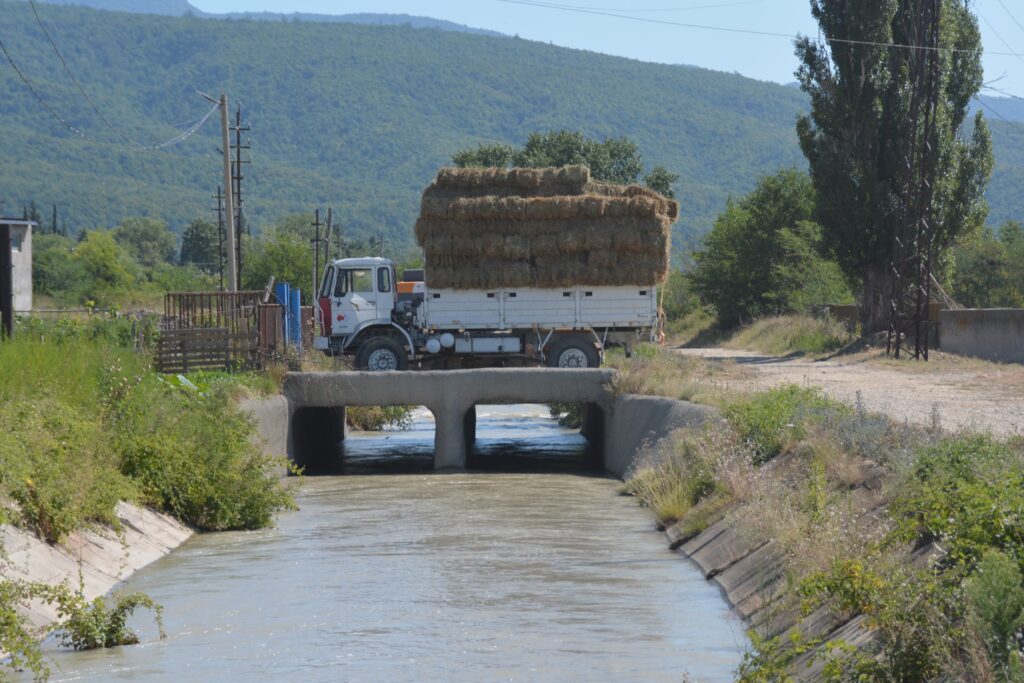
To prove the point, we followed winding mountain roads, usually behind a diesel-belching truck older than ourselves, until we found the mountain-top town of Sighnaghi. Here’s a town which had a fascinating history, an ancient basilica and a super-duper wall from goodness-knows-when and they turned it into a delightful place to spend a couple of hours, as we did. Totally cool.
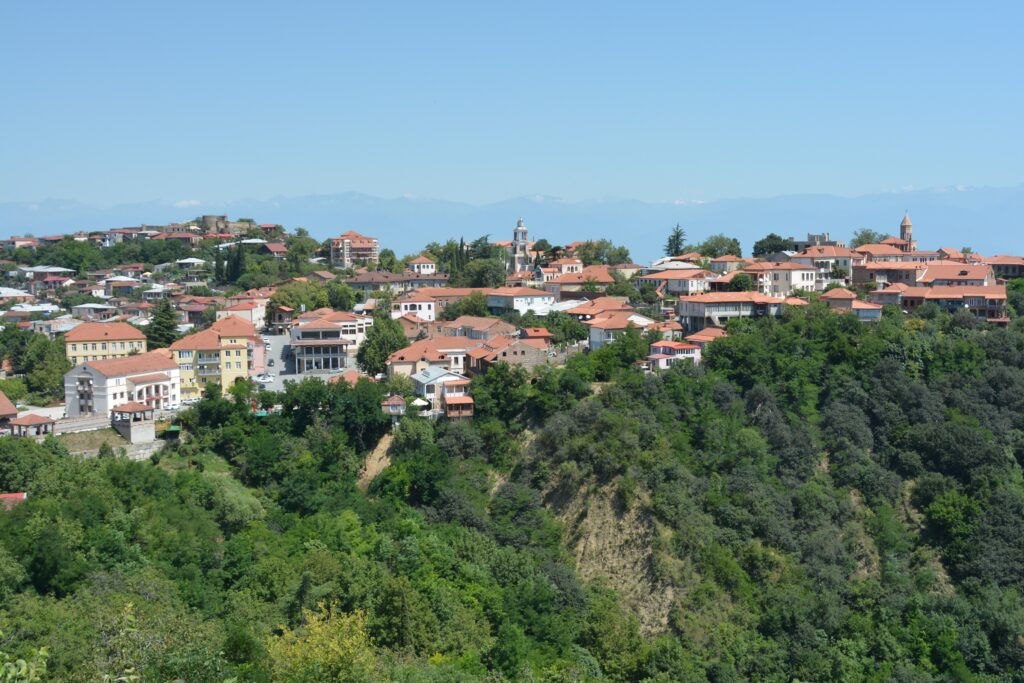
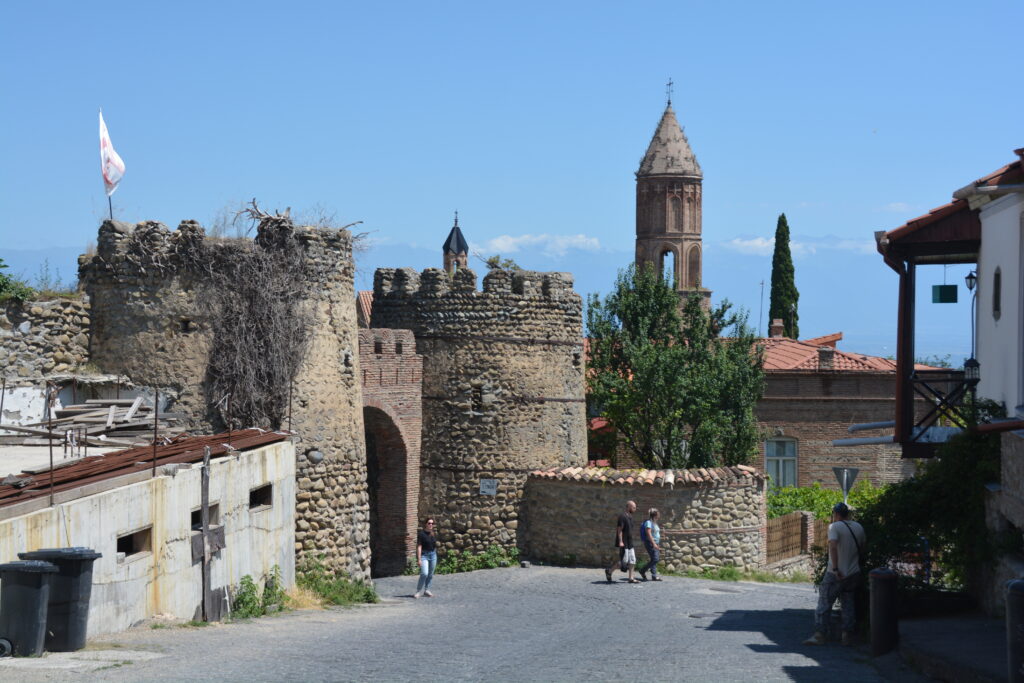
We then headed north through Georgia’s famous and extensive wine region, passing endless rows of vines, usually in small plots and literally hundreds of wineries until we neared the town of Tevali. A side note here, we have bought a number of Georgian wines, self-proclaimed famous the world over and allegedly the birth place of wine, and we have found it hit and miss. There have been a couple of beauties, that’s for sure, but there has been a shocker or two that have had to be poured out after the first sip.
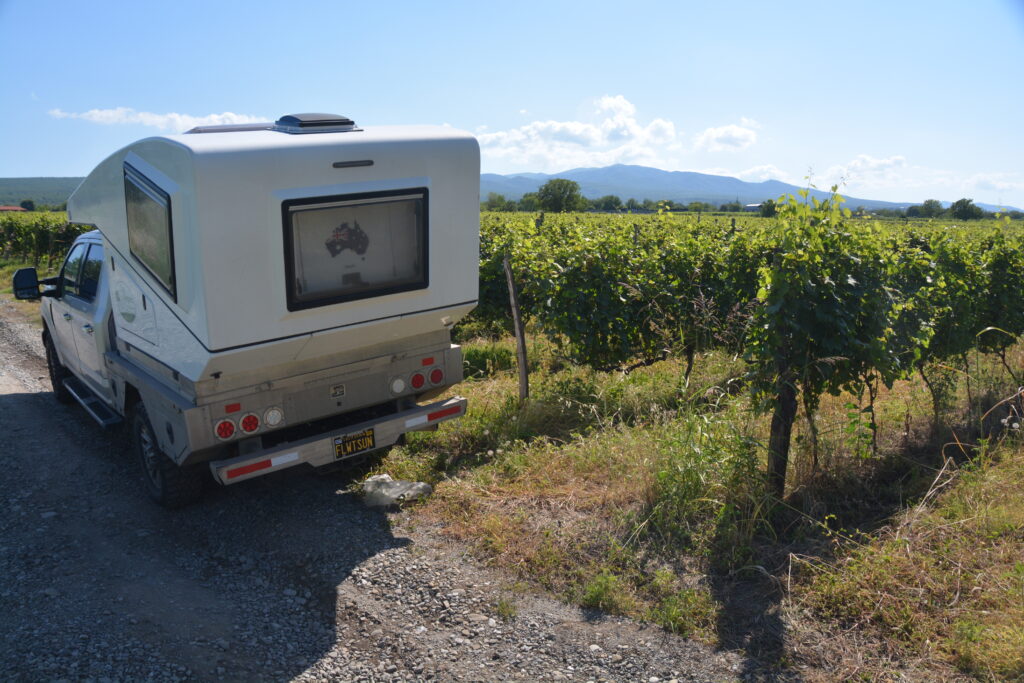
We visited two sites – the Tsinandali Estate, home of one of Georgia’s most famous 19th century leaders, and the castle with an impressive wall around it in downtown Tevali which was the home of 18th century King Erekle II, as if you care. This was all a bit meh and we raced off to camp in the grass on the banks of the Alazani River with wonderful views of the Greater Caucasus Mountains to our north and the calming sound of the river at our feet. Phew!
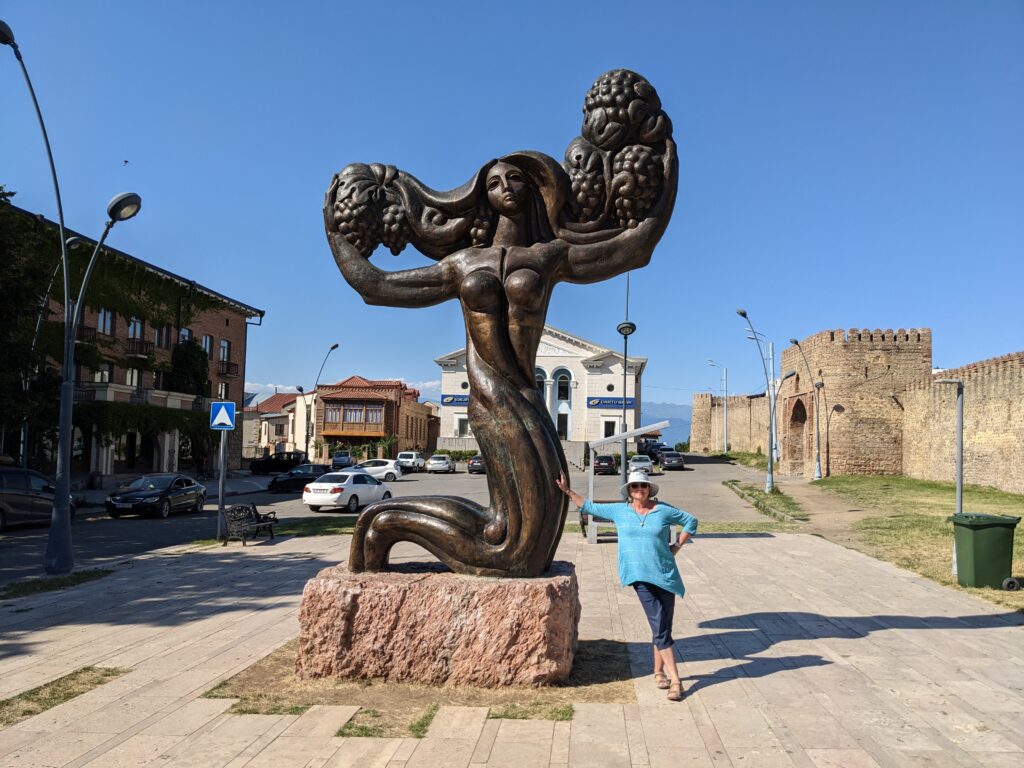
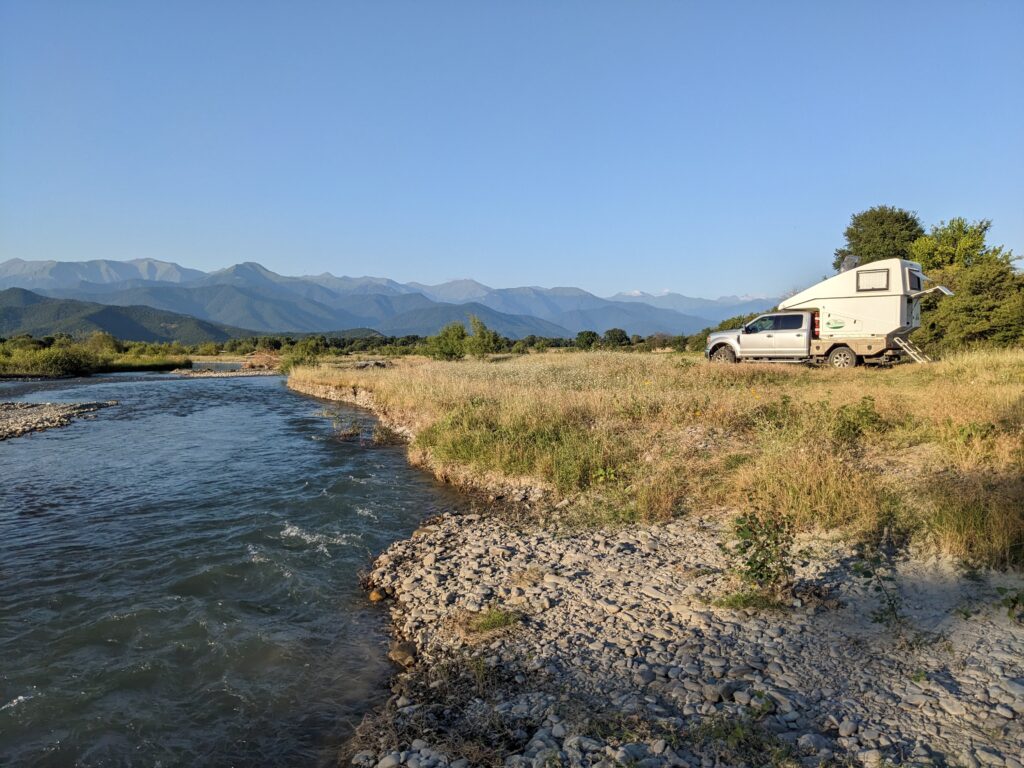
On a rainy and stormy morning, our first of the trip, we visited the super-impressive Alaverdi Monastery, originally built in the 11th century and after many knock downs and rebuilds it was most recently renovated in the last 15 years to show off it’s grand past. This cathedral was the largest in Georgia for almost 1,000 years and still today cuts a very imposing figure. It was awesome to stand inside this ancient monster and imagine all the history, both good and bad, it has witnessed.


We had loved our time in Georgia so far but now we were venturing into the northern reaches of the country and in particular exploring the Greater Caucasus Mountains which form a natural border to Russia on the other side. These mountains are legendary for many reasons and we were keen to have a closer look.


As you said, “you are discovering some real gems.” Eric